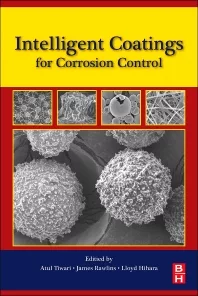Associative Thickeners for Use in Tint-Base Paint
Since their introduction in 1973, associative thickeners have captured an increasing share of the thickener market, displacing non-associative thickeners such as hydroxyethyl cellulose (HEC). The acceptance of associative thickeners has been primarily due to their ability to impart favorable rheology to waterborne coatings. However, associative thickeners are, as a class, much more sensitive to variations in coating composition than are non-associative thickeners. Changes in latex type, surfactant, or co-solvent levels, or the addition of colorants, can have a pronounced effect on paint viscosity.

Effect of Colorant Additions
Colorants are a major factor complicating the development of coatings containing associative thickeners. Very little paint is actually sold that is neither tinted nor toned. The addition of colorants, either to enhance the hiding of off-whites or for the development of color, can have a strong impact on viscosity. Stormer viscosity losses of 30-40 KU are not uncommon for deep-tone and neutral bases (those using 8-16 oz/gal of colorant). Formulations using hydrophobically modified ethoxylate urethane (HEUR) thickeners appear to be particularly prone to large viscosity losses. Figure 1 illustrates the effect of adding eight oz/gal of lamp-black colorant to an exterior acrylic trim paint prepared with various thickeners. The findings presented were the average response of over 80 thickeners, tabulated in their respective class.
Interestingly, the thickening efficiency of the thickener also seems to impact the viscosity loss experienced with the addition of colorant (see Figure 2). An examination of commercially available HEUR thickeners reveals that generally, the more efficient the thickener, the greater the viscosity loss.

State of the Art?
Paint formulators typically compensate for this viscosity loss by increasing the initial viscosity of the paint by 30-40 KU. However, this approach presents some problems. First, the high initial viscosity slows the filling process and makes it difficult to thoroughly mix the colorant into the paint at the store. In addition, colorants result in varying degrees of viscosity reduction. Figure 3 illustrates the impact on paint viscosity of 16 oz/gal of colorant on an exterior, acrylic trim paint thickened with a blend of HEC and HEUR thickeners. The result is that the application properties and appearance of a can of paint vary with color selection and, in most cases, is substandard.Alternatively, a blend of associative and non-associative thickeners may be used. This approach most often results in a coating that has inferior application properties and unacceptably large viscosity loss from tinting. This fact is demonstrated by the performance of a commercial, exterior trim paint formulation using a combination of non-associative and associative thickeners (see Table 1). In this formulation, not only is an unacceptably large Stormer viscosity drop observed, but poor film build is also experienced due to an accompanying loss of ICI viscosity with the addition of colorants. This formulation also suffers from severe color float due, in large part, to the overall loss in viscosity.
An assessment of the current "state of the art" methods reveals the need for a thickener that resists viscosity loss when colorants are added.
UCAR POLYPHOBE Tint Series
UCAR POLYPHOBE thickeners are hydrophobically modified alkali soluble (HASE) thickeners and rheology modifiers. This family of thickeners consists of several established products, such as the Tailored Rheology series, that have found acceptance in both interior and exterior coating applications.Although capable of delivering a range of rheological response, HASE thickeners are not immune to the negative impact on viscosity experienced with the addition of colorants. Driven by the need to develop thickeners less sensitive to the addition of colorants, the UCAR POLYPHOBE Tint series was created.
The UCAR series of thickeners is comprised of UCAR POLYPHOBEs T-900 and T-901. This material is a high efficiency thickener that imparts Stormer viscosity with a minimum amount of thickener. It is a rheology modifier designed to be used in combination with UCAR POLYPHOBE T-900 to enhance brush drag, spread-rate, flow and leveling. The actual blend ratio of the two thickeners will depend on the target coating rheology, latex binder type, pigment volume concentration (PVC), and coating volume solids. Figures 4 and 5 illustrate the difference in paint thickener efficiency between T-900 and T-901 in a vinyl-acrylic based coating. Paint thickener efficiency (PTE) is defined as the amount of active thickener per 100 gal of paint required to achieve a Stormer viscosity of 95KU. T-900 would, in most instances, either be used exclusively or as the major component of a blend with T-901 in vinyl-acrylic paints. The ICI viscosity development of T-900 has been optimized for use in vinyl-acrylic formulations.
In coatings based on small particle size acrylic or styrene acrylic binders, a larger percentage of the thickener blend would normally consist of UCAR POLYPHOBE T-901 in order to obtain the desired coating rheology.
A systematic approach for establishing the appropriate blend ratio of UCAR POLYPHOBEs T-900 and T-901 for a given formulation involves preparing two paint samples. The first sample would be thickened to the desired Stormer viscosity with T-900 exclusively. The second sample would use only T-901. From these samples, the appropriate blending ratio can easily be established using the coating rheology measurements and desired application properties.

Case Study
An example of this approach to formulating can be presented for the exterior trim paint previously discussed. In this work, two paint samples were prepared. These samples were thickened with either T-900 or T-901 to a Stormer viscosity of 91 KU. The rheology of these paints was measured and compared to the performance target established by the paint formulator (see Table 2). Based on a comparison of ICI viscosity, a T-900/T-901 blend ratio of 95-to-5 was chosen. The use of the T-900 series in this formulation resulted in a significant reduction in thickener requirement (39% less thickener) while maintaining the application properties. In addition, it improved the viscosity stability upon tinting (see Figure 6). Further, enhanced color acceptance and resistance to color float were observed.Conclusion
The introduction of associative thickeners to the coatings industry has resulted in a dramatic improvement in the application properties of waterborne paints. However, as a class, associative thickeners are extremely sensitive to the addition of colorants, and until now it has been difficult for paint formulators to achieve desirable application properties in deep and neutral tint-base applications.
With the development of the UCAR POLYPHOBE Tint series of thickeners, paint formulators can now achieve desirable coating rheology and insensitivity to colorants in deep and neutral tint bases. By using blends of T-900 and T-901, the formulators will be able to "dial-in" coating rheology in a range of formulations.
Acknowledgements
The authors would like to thank Heather Angel, Tim Witwer and Jason Carter for their contributions to this article.For more information about thickeners, contact The Dow Chemical Co., UCAR Emulsion Systems, 410 Gregson Drive, Cary, NC 27511; phone 800/876.8227; fax 919/469.6797; e-mail keutzenw@dow.com; visit www.dow.com; or Circle Number 138.
Links
Looking for a reprint of this article?
From high-res PDFs to custom plaques, order your copy today!







